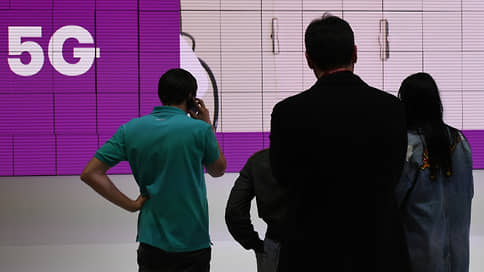The Ministry of Digital Development is discussing with Rospotrebnadzor changes in sanitary requirements for 5G
[ad_1]

The Ministry of Digital Development is discussing with Rospotrebnadzor changes in sanitary standards regulating permissible 5G radio frequency radiation. The ministry calls the current standards “the strictest in the world,” emphasizing that they are outdated. But Rospotrebnadzor does not agree with the results of studies of the influence of electromagnetic radiation on human health, which the Ministry of Digital Development relies on. Telecom operators explain that the revision of SanPiNov will simplify the development of communications by increasing the power of base stations and reducing their number when launching new generation networks. Experts believe that even these relaxations will not be enough.
On March 19, the Federation Council held a meeting dedicated to the “Strategy for the Development of Communications until 2035,” as follows from the announcement of the event, which Kommersant got acquainted with. At the meeting, representatives of the Ministry of Digital Development and Rospotrebnadzor disagreed on the issue of changing SanPiNs, which regulate permissible 5G radio frequency radiation, a source familiar with the meeting told Kommersant. According to him, the ministry wants to change existing regulations to simplify the creation of a 5G network in the Russian Federation. However, Rospotrebnadzor does not agree with the results of a study of the influence of electromagnetic radiation on human health, which are cited by the ministry.
The Ministry of Digital Development is based on a study conducted by the Research Institute of Occupational Medicine named after. N.F. Izmerov on the initiative of the Department of Information Technologies (DIT) of Moscow in 2020, clarifies Kommersant’s source on the market. Then the institute came to the conclusion that radiation with a power of 20–25 μW/sq.m. can be considered safe for humans. cm; in residential premises it is advisable to leave it within 10 µW, but outdoors it can be raised to 40 µW. According to current Sanitary Regulations, the maximum radiation level in the main cellular communication bands is 10 μW.
Rospotrebnadzor explained to Kommersant that the results of existing studies of the influence of electromagnetic fields on human health, including frequencies above 2 GHz (that is, those defined for 5G in Russia), “speak about the safety for health of levels of electromagnetic radiation that are within the established standards ” The Service believes that there are no grounds for revising the standards.
The Ministry of Digital Development considers it advisable to revise the standards. “Now all base stations in Russia comply with current SanPiN standards,” the ministry notes. “However, they were developed in the 1980s and remain among the most stringent in the world.”
Currently, Russian legislation establishes “some of the most stringent radiation standards in the world, which are not justified by any comprehensive medical or technical research,” confirms MTS. MegaFon agrees that the standards are outdated and require revision: “This will create conditions for the deployment of networks of the 5th and subsequent generations.” VimpelCom adds that legal requirements “should create conditions for the introduction of advanced technologies.” Tele2 declined to comment.
Increasing the permissible power is most important for ensuring coverage of highways and sparsely populated areas, notes Alexey Boyko, an analyst at the specialized Telegram channel abloud62. “You can install a more powerful radio transmitter there to cover a large area with one device. This will allow operators to reduce costs. In cities, increasing the signal strength can improve the quality of indoor coverage without the need to spend money on special equipment,” says the expert. A market source clarifies that if SanPiN is “simplified to 20–25 μW,” base stations can be installed “on average half as often.”
At the same time, the director of strategic communications at Irtei (developing domestic base stations), Alexander Sivolobov, believes that increasing the permissible radiation standard from 10 μW to 20–25 μW “is unlikely to improve the situation with the placement of communication towers,” since operators will consider this increase is “only as a protective buffer to minimize the chances of receiving claims from Roskomnadzor.” In his opinion, it is necessary to immediately switch to international standards (100 μW and above), since “replanning, restructuring and reconfiguring the network will take many years.”
[ad_2]
Source link





